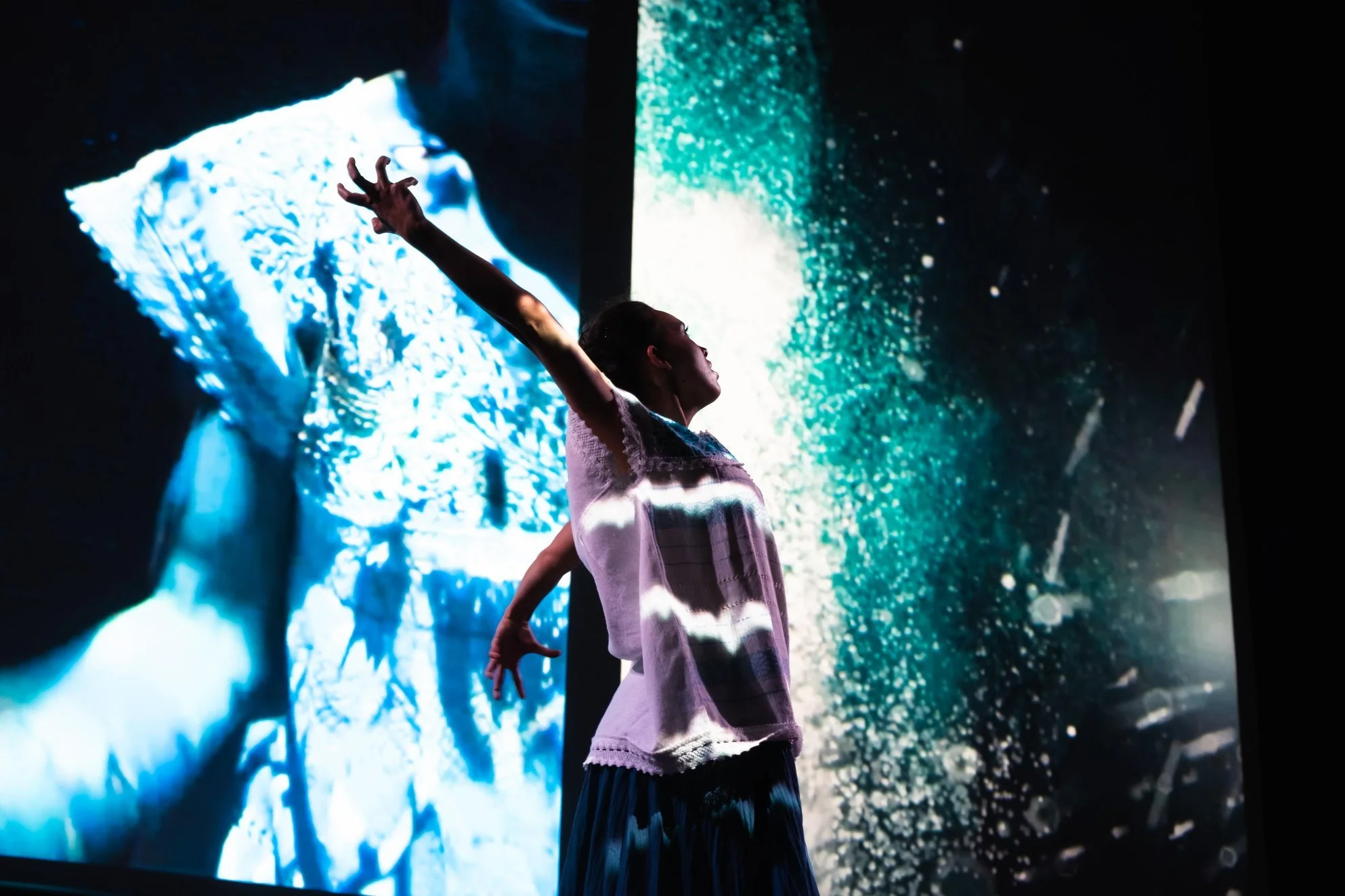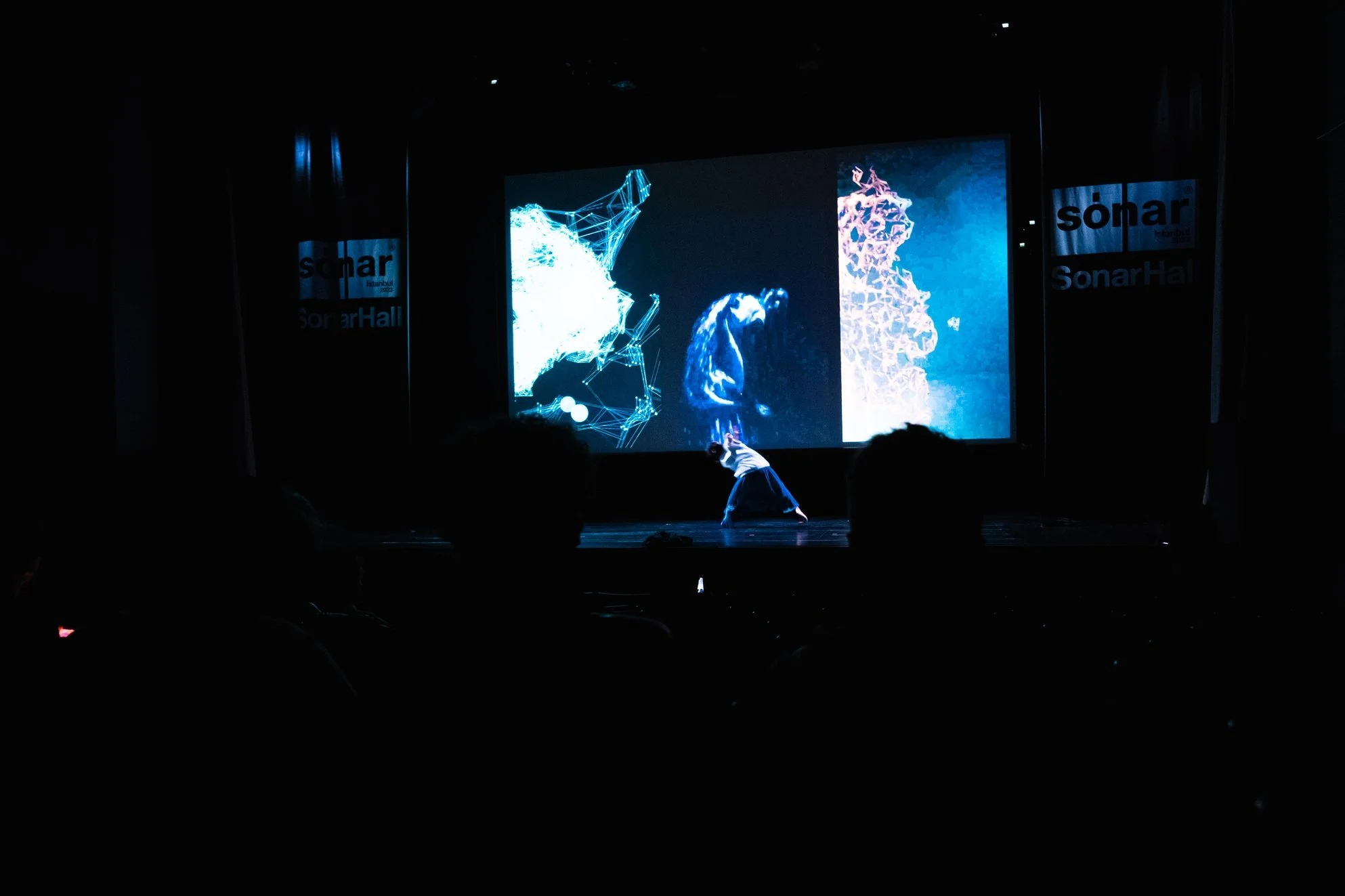HAITA
Tupac Martir
Artwork Description:
HAITA imagines how a dancer’s choreography can be explored inside out, through cutting-edge scientific and creative technology developed by the renowned international creative studio Satore. This installation combines dance with music and state-of-the-art technology, to form different streams of projections of the same choreographed piece. The dance itself incorporates ballet, Portuguese vira, and Mexican traditions − captured on film, but also through volumetric and motion capture technology.
While motion capture converts movements into computer-generated animations, volumetric capture records changes in the spaces around the dancer, inverting the process. The installation is activated by a dancer, who is illuminated by a third projection, based on an electroencephalogram made of her brain and representing the patterns of her brain waves throughout the choreography. Tupac is a resident at Champalimaud Research Center, having used medical technology to analyze the dancer’s body and brain, building an inverted image of how a dancer imagines her choreography. The music used is inspired by two rivers, the Portuguese Tagus and the Rio Grande, which separates Mexico from the United States.
Inspired with great liberality by Mexican song and Portuguese fado, the music is then sprinkled with the melancholy that runs in the blood of both countries, born from the stories of love, loss and migration. The piece also pays tribute to the many migrants who risk their lives in an attempt to have a better life, whether it is in the borders across Mexico, Venezuela, Ukraine, Yemen or any other country.

